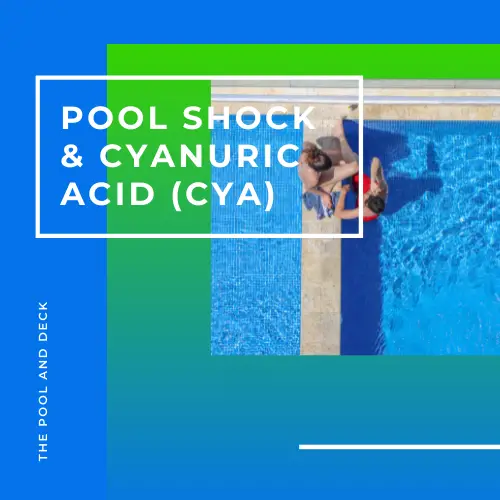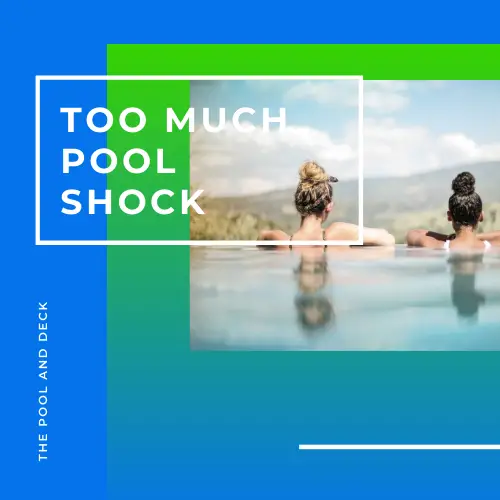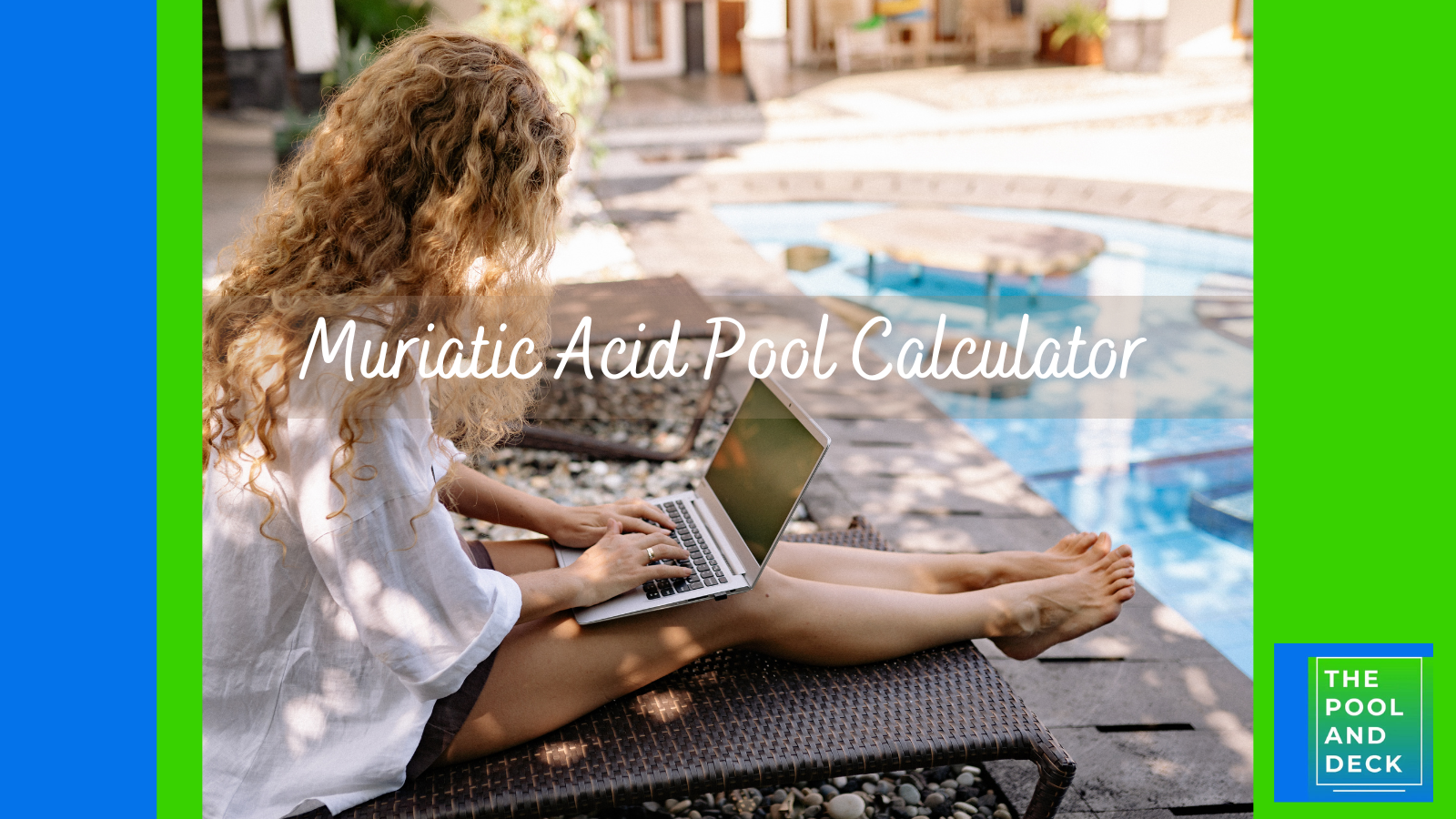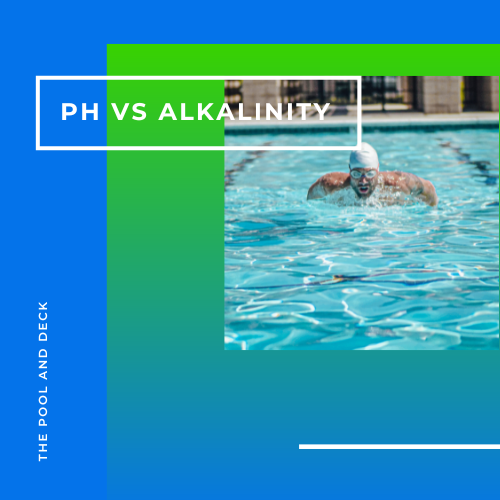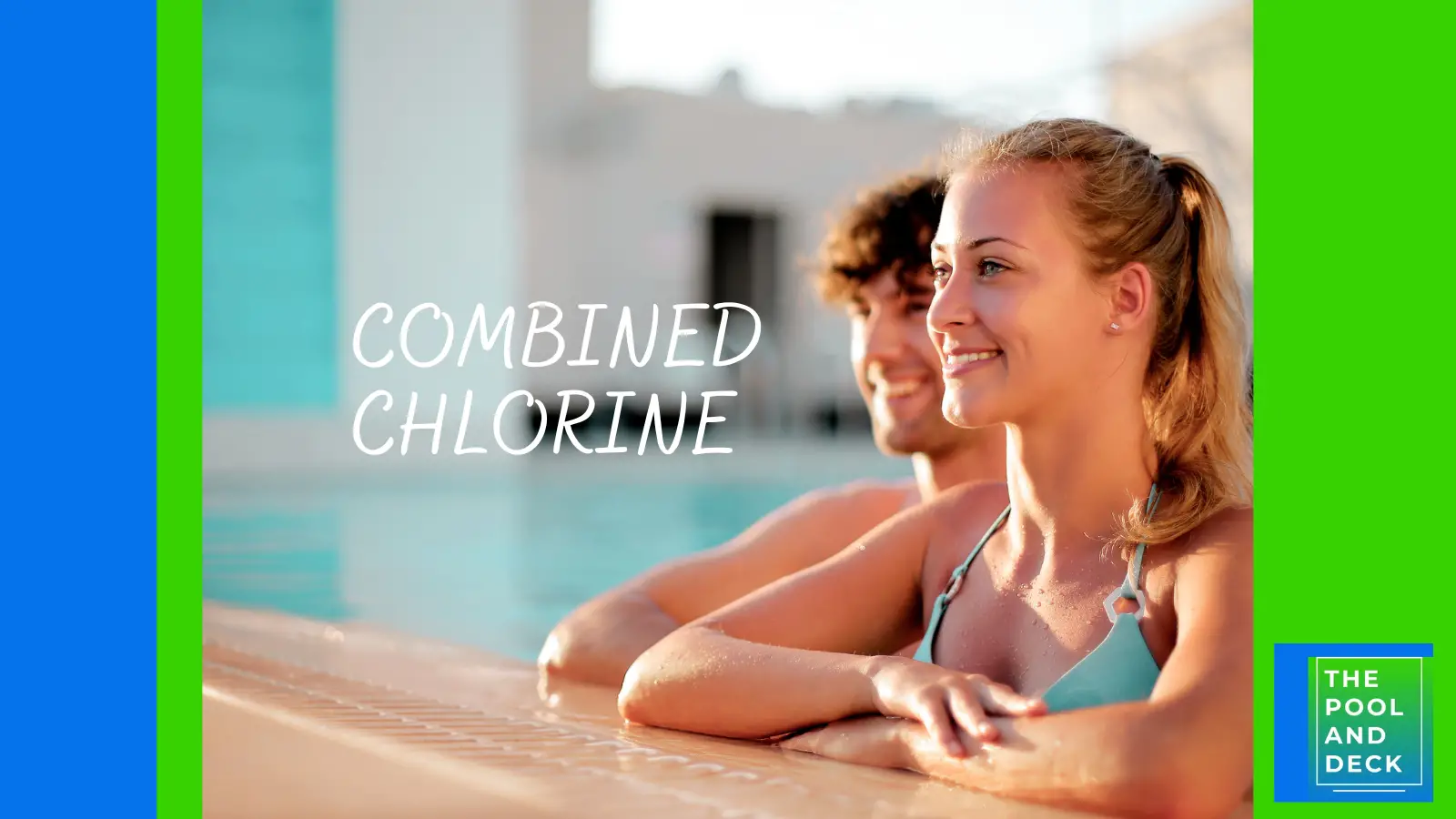Low Pool Stabilizer: Causes, Solutions, and Tips for Perfect Pool Chemistry
As an Amazon Associate, I earn from qualifying purchases.
Is your pool looking murky or giving off a strong chlorine smell? Guess what? Maybe Low Pool Stabilizer is the key to the problem!
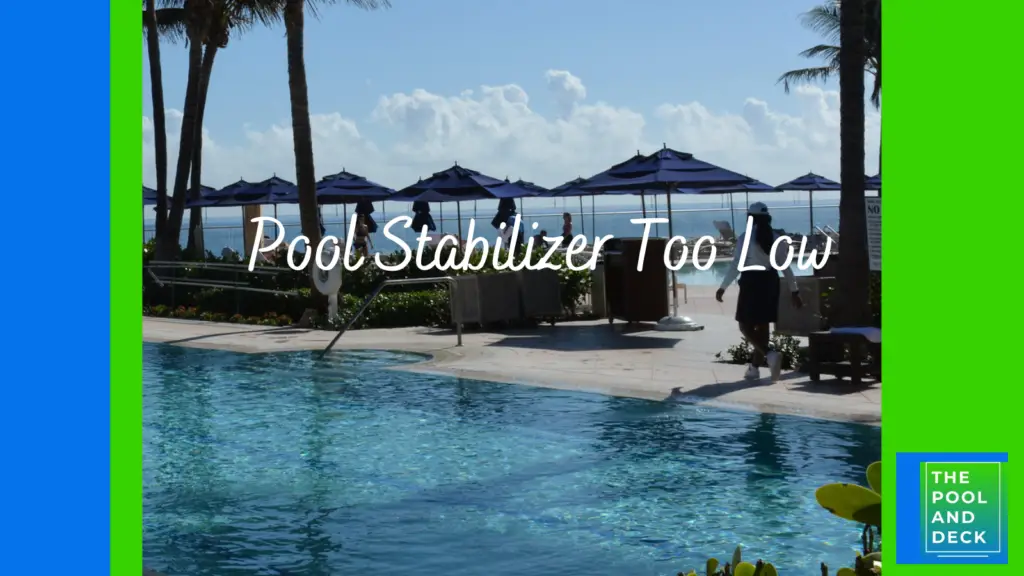
While most pool owners—first-timers or seasoned pros—know that free chlorine is essential for keeping a pool clean and sanitized, not everyone realizes that it breaks down very rapidly under UV radiation from the sun.
In fact, without the pool stabilizer, healthy levels of free chlorine can dip below the critical level in less than a couple of hours.
In effect when the pool stabilizer becomes too low, free chlorine levels fall, chloramine levels rise and your pool becomes unsanitary and unsafe!
Key Takeaways
- Low pool stabilizer weakens chlorine’s UV protection.
- Rain, backwashing, and splash-out dilute stabilizer levels.
- Low cyanuric acid leads to higher chlorine consumption.
- Add pure cyanuric acid or stabilized chlorine to raise levels.
- Maintain CYA levels: 30–50 ppm for chlorine pools, and 60–80 ppm for saltwater pools.
- Excess stabilizer causes chlorine lock; fix it with water dilution or CYA reducers.
- Test stabilizer regularly to avoid imbalances in pool water chemistry.
Table of Contents
What is a Pool Stabilizer?
A pool stabilizer, also known as cyanuric acid (CYA), is a vital pool chemical that protects chlorine from being destroyed by sunlight.
Acting as a chlorine shield, it ensures that your pool’s free chlorine levels stay effective, maintaining proper sanitation and preventing algae growth.
Why is Cyanuric Acid Important?
Cyanuric acid binds with free chlorine through a reversible reaction where cyanuric acid donates protons (H+) to chlorine molecules and forms a stable compound called chlorinated isocyanurate.
Chlorinated isocynate is the protective barrier that protects free chlorine from UV degradation.
Without sufficient stabilizer, free chlorine breaks down quickly under sunlight, leaving the pool vulnerable to bacteria and algae growth.
How Does it Work?
Imagine cyanuric acid as sunscreen for your pool’s chlorine. It slows the degradation caused by UV rays, keeping your pool water clean for longer and saving you money on frequent chemical additions.
Low pool stabilizer level means the free chlorine has no protection from UV rays, which can rapidly compromise a pool’s sanitation.
Keep your stabilizer levels balanced to maintain crystal-clear, safe, and bacteria-free water.
Why Is My Pool Stabilizer Low?
If your pool stabilizer levels are low, it’s likely due to water dilution rather than degradation.
Unlike other chemicals, cyanuric acid (CYA) does not break down naturally or react with pool water. Instead, stabilizer levels drop when fresh water is added, diluting the concentration.
Common Causes of Low Stabilizer Levels
Some of the common causes of low Cyanuric Acid in a swimming pool are:

1. Dilution from Rain or Water Additions
Heavy rainfall or frequent topping off of evaporated water dilutes stabilizer levels. Rainstorms, especially in wetter climates, can significantly lower CYA concentration.
2. Backwashing and Water Changes
Routine backwashing and water replacements for cleaning the pool inadvertently remove stabilizer along with the water.
3. Splash-Out from Pool Activities
Energetic swimmers or water features often cause water loss, necessitating fresh water that lacks stabilizer.
4. Incorrect or Irregular Testing
Failing to test stabilizer levels regularly can lead to imbalances that go unnoticed.
What Happens If Your Pool Stabilizer Is Too Low?
Low pool stabilizer levels, or insufficient cyanuric acid (CYA), can make your pool unsafe and unsanitary.
Without enough stabilizer, your pool faces several challenges, from increased chlorine usage to poor water quality.
Why Low Stabilizer Is a Problem

1. Increased Chlorine Consumption
When CYA levels are too low, UV rays from sunlight rapidly break down free chlorine. This forces you to add chlorine more frequently, increasing both costs and effort to maintain proper sanitation.
2. Reduced Chlorine Effectiveness
Without a stabilizer, chlorine doesn’t have enough time to effectively kill bacteria and algae before breaking down. This leaves your pool vulnerable to harmful pathogens and contamination.
3. Chloramines and Strong Odors
Low CYA can lead to the buildup of chloramines—ineffective chlorine byproducts that cause a strong chlorine smell. These compounds irritate skin and eyes while offering little sanitizing power.
4. Algae Growth and Cloudy Water
With low cyanuric acid, free chlorine gets depleted fast under UV in the sun’s rays. The possibility of unchecked algae growth increases dramatically. Algae blooms can turn your pool green and make the water cloudy.
Now your pool has an uninviting look and an unsanitary swimming environment. You will need to shock your pool (likely several times) and replenish the necessary pool chemicals lost in backwashing.
It is an expensive and time-consuming activity, not to mention your pool can not be used during this period!
Maintain Optimal Stabilizer Levels
Keep your cyanuric acid levels within the recommended range of 30-50 ppm (60-80 ppm for saltwater pools) for effective protection against UV rays.
Regularly test and adjust stabilizer levels, especially after heavy rainfall or maintenance, to ensure your pool remains clean and well-sanitized.
How to Raise Cyanuric Acid Level in a Pool
Raising cyanuric acid levels is a straightforward process that can be done using specific products designed for this purpose. Depending on your situation, you can choose between methods that add stabilizer directly or indirectly.
Before adding any chemicals to your pool, it is essential to test your water using a liquid test kit or test strips. Based on the test result, balance the pH level and total alkalinity, first.
Method 1: Using Stabilized Chlorine
One way to raise cyanuric acid levels is by using stabilized chlorine products.
Stabilized chlorine, such as dichlor or trichlor granules or tablets, has cyanuric acid incorporated in the formulation. This can be a way to introduce CYA into your water, if you have been using un-stabilized chlorine or liquid bleach.
Recommended Pool Sanitizer (Trichlor)
HTH 42055 Pool Care 3″ Chlorine Tabs Advanced
Sanitizer, clarifier, and algaecide to protect your swimming pool and swimmers with one easy and convenient tab.
This method is ideal for ongoing maintenance, but it’s important to monitor your stabilizer levels to prevent overdoing it, which can lead to stabilizer lock (discussed later).
Method 2: Adding Pure Cyanuric Acid (Pool Stabilizer)
If your pool’s CYA level is very low, using pure cyanuric acid, commonly sold as pool stabilizer, is a faster and more targeted solution.
Pure CYA is available in granular or liquid form. Granular CYA needs to be dissolved in warm water or added via the skimmer, while liquid stabilizer can be poured directly into the pool.
Both methods are effective for quickly raising stabilizer levels. Generally 3 ounces of pool stabilizer will raise a 10,000-gallon pool’s CYA levels by 10 ppm.
Recommended Pool Stabilizer (Cyanuric Acid)
HTH 67061 Pool Care Stabilizer
- EXTENDS CHLORINE LIFE: Helps slow down the degradation of chlorine by direct sunlight
- EASY APPLICATION: Simply add HTH Chlorine Stabilizer directly to your skimmer
Step-by-Step Guide to Adding Pool Stabilizer
Follow these steps to safely raise cyanuric acid in your pool:
- Test Your Current CYA Levels
Use a reliable pool testing kit or test strips to check the current level of cyanuric acid. Ideal levels are typically between 30–50 ppm (parts per million) for most pools. - Calculate the Required Amount
Based on your pool size and the current CYA level, calculate how much pool stabilizer is needed to reach the desired level. Most product labels include dosage charts for guidance. - Add the Stabilizer
- For granular stabilizer: Dissolve it in a bucket of warm water, then slowly pour the solution into the skimmer while the pump is running.
- For liquid stabilizer: Pour it directly into the pool near a return jet to ensure proper distribution.
- Run the Pump
Keep the pump running for at least 24 hours to help distribute the stabilizer evenly throughout the water. - Re-Test and Adjust
After 48 hours, test the CYA level again to ensure it has reached the desired range. Add more stabilizer if necessary.
Maintaining Balanced Cyanuric Acid Levels
Regular monitoring and adjustments (only when required) of your pool’s cyanuric acid (CYA) levels will keep your chlorine working effectively, minimize pool maintenance costs, and prevent an increase in pathogens.
Ideal Cyanuric Acid Ranges for Pools
The recommended cyanuric acid levels depend on the type of pool you have:
- Chlorine pools: 30–50 ppm
- Saltwater pools: 60–80 ppm
Staying within these ranges ensures that your chlorine stabilizer is effective without causing over-stabilization, which can lead to chlorine lock.
Testing Cyanuric Acid Level in a Pool
Test the cyanuric acid (CYA) level in your pool every week (during the pool season) and at least every month during the off-season. This is essential for maintaining proper water chemistry and ensuring effective chlorine stabilization.
Here are the common methods to test CYA levels, along with step-by-step instructions.
1. Using a Test Kit
Materials Needed:
- CYA test kit (e.g., Taylor K-2005)
- Clean water sample container
- R-0013 reagent (contains melamine)
Recommended Chemical Test Kit
Taylor K-2005 Complete DPD 9-in-1 Test Kit
Tests for free & total chlorine, bromine, pH, total alkalinity, total hardness, and cyanuric acid (CYA) levels.
Procedure:
- Collect Water Sample: Fill the provided mixing bottle with pool water to the lower mark (typically 7 mL).
- Add Reagent: Fill the mixing bottle to the upper mark with R-0013 reagent, which contains melamine. This reagent will react with cyanuric acid to create turbidity.
- Mix: Cap the bottle and shake it vigorously for about 30 seconds to ensure thorough mixing.
- Pour into Comparator Tube: Stand outdoors with your back to the sun and pour the mixture into the comparator tube until the black dot at the bottom disappears.
- Read Result: The level at which the dot disappears corresponds to the CYA concentration. If you can still see the dot when the tube is full, your CYA level is very low (close to zero). If it disappears at a certain level, read that value against the scale on the side of the tube.
2. Using Test Strips
Materials Needed:
- CYA test strips
Procedure:
- Submerge Strip: Dip a test strip into the pool water for the time specified on the package (usually a few seconds).
- Wait for Reaction: Allow the strip to sit for the recommended time to let it react with the water.
- Compare Colors: Match the color change on the strip to the color chart provided on the packaging to determine your CYA level.
This method is generally less precise than using a test kit but is quicker and easier.
Stabilizer Lock and What to Do
While cyanuric acid (CYA) is essential for maintaining chlorine effectiveness, too much of it can cause problems.
High stabilizer levels can lead to a condition known as stabilizer lock, which hinders chlorine’s ability to sanitize your pool effectively.
Effects of Excess Stabilizer (Stabilizer Lock)
When cyanuric acid levels rise above 100 ppm, your pool may experience stabilizer lock. In this state, the chlorine becomes overly bound to the stabilizer, making it ineffective against bacteria and algae.
Even though you’re adding chlorine, it may fail to keep the pool clean, leading to cloudy water, algae growth, and potentially unsafe swimming conditions.
High CYA level is tough to correct. It can only be corrected through water dilution or specialized treatments.
How to Lower Cyanuric Acid Levels
If CYA levels are too high in your pool, you can reduce them using one of the following methods:
- Partial Water Drain and Refill
The most effective way to lower cyanuric acid is by draining a portion of your pool water and refilling it with fresh water. The amount you need to replace depends on how high your stabilizer levels are and your target range. - CYA Reducer Products
Some chemical treatments, known as CYA reducers, are available to help lower stabilizer levels. These products work by breaking down cyanuric acid molecules, reducing the concentration over time. - Reverse Osmosis Filtration
If you live in an area where water conservation is important, consider hiring a professional service to perform reverse osmosis (RO) treatment on your pool. This process filters out excess stabilizer and other impurities without requiring water replacement.
FAQ: Low Pool Stabilizer
How Often Do You Put Stabilizer in a Pool?
Stabilizer is added to the pool as needed, typically during the initial pool setup or after significant water changes.
In case you are using Trichlor tablets, then you are adding Cyanuric Acid (CYA) on a regular basis to your pool anyways.
What Can I Use Instead of a Pool Stabilizer?
Nothing can substitute pool stabilizer’s role in protecting chlorine from sunlight.
Can Pool Stabilizer be Too High?
Yes. This is often the issue with pools that use Trichlor tablets for regular sanitation and may also use Dichlor Shock.
What are Pool Stabilizer Disadvantages?
High pool stabilizer levels (over ppm) can lead to “stabilizer lock,” hindering chlorine effectiveness.
Overuse accumulates stabilizer with each application. Dilution is the primary remedy, requiring partial water replacement.
Can Baking Soda or Pool Shock Raise Cyanuric Acid?
No, neither baking soda nor pool shock will raise cyanuric acid levels. Baking soda is used to increase alkalinity and most shocks are a high dose of unstabilized chlorine.
Does Low Pool Stabilizer Cause Cloudy Water?
Yes, low cyanuric acid can indirectly cause cloudy water. When stabilizer levels are too low, chlorine effectiveness is reduced, making it harder to keep the pool free of contaminants.
Does a Saltwater Pool Need Cyanuric Acid?
Yes, even saltwater pools require cyanuric acid. While a saltwater pool generates its own chlorine, this chlorine is just as susceptible to UV degradation as manually added chlorine.
For more information check out my Pool Chemistry for Beginners: With 5 Super Helpful Cheat Sheets!
Thank you very much for reading the post. I do hope you found it informative and helpful.




